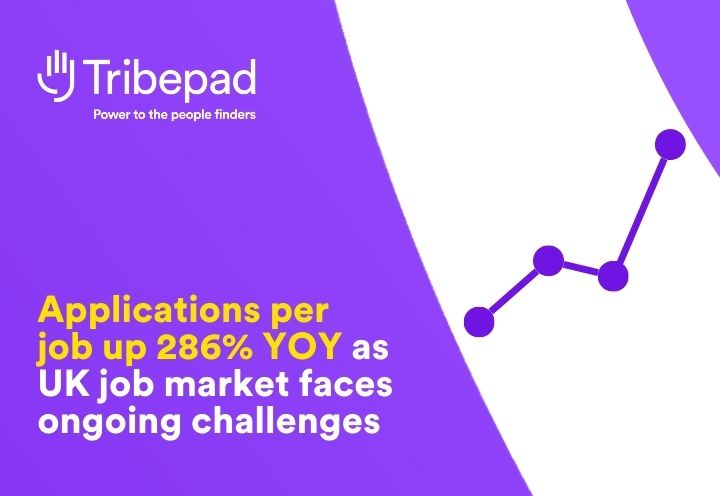What are your goals for temporary recruitment over the next year or so? Because we chat to recruitment professionals in healthcare and social care constantly, and the same four things keep coming up tops:
- Reducing agency spend
- Improving the candidate experience
- Reducing turnover
- Increasing quality of hire
Achieving those goals isn’t particularly complex. You know what’s needed to make your candidate experience more consistent, say.
But there are endless hurdles slowing you down.
Like, sure, you’re trying to reduce agency spend. But your on-site HR managers keep engaging agencies because making one call is miles easier than handling the end-to-end recruitment process. And they’re already run off their feet.
And yep, a consistent candidate experience has been the goal for months (or more). But hiring managers keep cancelling interviews last-minute because the people you care for take precedence, and emergencies won’t wait.
Here’s the thing.
If you haven’t evaluated the recruitment tech landscape in the last few years, you mightn’t realise how much things have changed. A relatively new category – called contractor management software – is helping healthcare recruiters make leaps and bounds towards goals like these.
So that’s what this article’s about. We’ll examine the four most common goals for temporary recruitment, the hurdles stalling progress, and how contractor management software overcomes them.
4 recruitment goals contractor management software helps deliver
Ah, the biggie. You’re spending tens of thousands on agencies – often tens of thousands that aren’t even budgeted for formally. You know healthcare’s average staffing agency margin of 31% is unsustainable so reducing spend is a major priority.
The hurdle is…
Where there’s demand there’ll always be agencies. Or, put another way, understaffing is a bigger issue than overpaying. You’ll pay for agencies if that’s the only way to meet demand.
And right now you can’t meet demand any other way, at least for flexible hires like locums and bank staff. Hiring managers and on-site HR managers are swamped and your team isn’t big enough to reasonably meet all your recruitment needs.
Contractor management software helps by…
It tackles the issue at the root, becoming a force multiplier. It empowers recruitment professionals to do more with less – so small teams can suddenly meet much greater demand in-house.
Essentially, contractor management software transforms your team into an in-house agency with your own bank of staff. So agencies become your last resort, not your go-to.
You work with tens, hundreds, maybe even thousands, of temps. Which means hundreds and thousands of potential employees come into contact with your business regularly.
Within that, there’s no universal candidate journey – your candidate experience is fragmented and inconsistent.
The hurdle is…
For most healthcare and social care organisations, temporary recruitment is firefighting. There’s no time to build a unified, consistent process.
One temp might come through a superstar agency who’ve done a great job conveying your employer brand. But then turn up for an interview with a home manager who’s totally forgotten.
Another might’ve applied directly but then get radio silence for months, only to hear from an agency recruiter they’ve got a shift tomorrow.
Contractor management software helps by…
It creates a central hub for hiring contractors/temps/bank staff/locums, so you have control over your candidate experience.
You could bring temp recruitment totally in-house – or, where you still outsource, use this new visibility to audit your PSL to agencies you trust (and get them to input candidates through your contractor management software too).
Contractor management software also automates important workflows like scheduling interviews and onboarding – so candidates have a consistent baseline experience, however busy people are on-site.
In 2019/20, the care sector saw an average turnover rate of 30.4% – more than double the UK’s average of around 15%. Turnover is an especially big problem amongst flexible workers: the Skills for Care 2020 report found zero-hours contractors have the highest attrition rate.
There are few things more frustrating than turnover, especially if you’ve been battling with hard-to-fill roles or racing for urgent cover.
The hurdle is…
Onboarding plays a major role. Harvard Business Review say onboarding drives 62% greater new hire productivity, 50% faster time-to-proficiency and 50% greater new hire retention, for example.
With better onboarding, your temps would be more likely to complete their shifts and more likely to work for you again. Plus new hires that aren’t first-day ready risk damaging your quality service and reputation amongst the people you care for.
But line managers and on-site HR managers are overwhelmingly busy – so onboarding often falls by the wayside. That’s why Gallup say 88% of employees think their employer did a less-than-great job with onboarding.
Read more: Why employee onboarding matters
Contractor management software helps by…
Contractor management software typically offers automated onboarding workflows. So every hire – even an urgent contractor covering one shift – automatically gets the right onboarding info.
Imagine how engaging it would be if every temp, contractor or locum got sent an awesome new starter handbook or welcome video before a shift. That’s what contractor management systems can make easy.
Plus, contractor management systems streamline some 80% of the admin involved with recruiting flexible workers. So frontline teams have a shorter recruitment to-do – and have more time free to add a personal touch, for onboarding that goes the extra mile.
Another major thing is that contractor management tools typically increase your volume of repeat temps, rather than one-off covers. When you build a loyal pool of freelancers you trust again and again, they need less input to get started and their turnover risk is dramatically lower.
The more workers coming into contact with your business, the less control you have – especially when those workers might be casual temps covering one shift for you. But everyone who works for you represents your brand, whether they’ve been with you an hour or a decade. Your reputation is on the line.
Read more: 31 ways to improve quality-of-hire in 2020
The hurdle is…
It’s another vicious cycle. The more pressure your team’s under, the more fragmented your recruitment ecosystem becomes – split across different agencies, speculative CVs and line manager favourites. You don’t have the visibility to impose control – or the time to take a strategic perspective.
Plus there’s the turnover issue again. Research suggests retention is critical to providing continuity and quality of care. If you’re battling high turnover, it’s the people you care for who feel it most.
Plus you’re constantly back at square one from a recruitment perspective, with a dwindling talent pool and an increasingly poor employer brand that dissuades great people from joining you.
Contractor management software helps by…
The biggest thing is that contractor management software empowers you to build your own talent pools. So you have a trusted, reliable, loyal, quality bank of staff internally.
It’s also about taking pressure off your team. By allowing you to get more done, contractor management systems free time to focus on strategic metrics like quality of hire.
And now you’ve got a central, in-house contractor hub you’ve got data. Data you can mine for opportunities to improve.
Good contractor management systems offer robust reporting that makes answering important questions simple. Like…how much do we spend on temps by location? Which temps do line managers like most? Where could we make roles permanent instead?
Could contractor management software help you?
Look, we’re not saying contractor management software is a magic salve. Healthcare recruitment faces massive challenges – and temporary recruitment most of all.
But we are saying, have a look. Because over the last year or so, some brilliant solutions have entered the market that might make your life easier – and help you make dramatic progress against your recruitment goals.







